Android Phone Fans |
- ZTE and NVIDIA to bring first Tegra 4 smartphone to China by Q2′s end
- Sony shows glimpse of Android tablet connectivity at PlayStation 4 unveiling
- Otterbox already planning HTC One cases
- Qualcomm unveils new Snapdragon 200 and 400 chipsets for entry-level and mid-range devices
- Here’s the full changelog for Android 4.2 Jelly Bean
- Google Drive update brings pinch-to-zoom in presentation view
- Will Sony revisit the idea of a PlayStation phone tonight?
- Qualcomm announces Quick Charge 2.0, boasts 75 percent faster charging times
- ASUS goes metal for Mobile World Congress teaser
- See yesterday’s HTC One unveiling in its entirety
- Analyst: Google Nexus 7 sales have topped 4.5 million
- LG Optimus F5 and Optimus F7 leak
- Google offers glimpse of Project Glass UI
- SwiftKey 4 with Flow leaves beta, now available from Google Play
- Google expands Glass Explorer program, invites regular folk to try on a pair
| ZTE and NVIDIA to bring first Tegra 4 smartphone to China by Q2′s end Posted: 20 Feb 2013 05:11 PM PST ZTE and NVIDIA have just announced that the two have paired up to bring the first round of Tegra 4 smartphones to the market. The first release is set to be out by the end of the second quarter of this year, and it will head straight to the manufacturer’s home base of China. With no details on what those phones will be just yet, we do know that the Tegra 4 will be paired with NVIDIA’s Icera i500 LTE-capable modem, giving those in China the super fast broadband speeds that we’ve all come to know and love. The Tegra 4 chipset is a quad-core 4+1 ARM Cortex-A15 configuration with a GPU that has 72 cores — I don’t know about you, but that sounds like a boatload of sheer performance goodness. If ZTE ever needed a phone that would help launch the company into the upper-echelon of smartphone manufacturers then tasking Tegra 4 for the job is not a bad idea at all. We’ll have to wait a while longer to know what, exactly, we’re in store for, so be sure to keep your eye on Phandroid as we had into what should be an exciting second quarter. Read on for full press details.
|
| Sony shows glimpse of Android tablet connectivity at PlayStation 4 unveiling Posted: 20 Feb 2013 04:15 PM PST Sony’s PlayStation event is going on right now, and the company has just announced the PlayStation 4! The games look great and the hardware sounds exciting, but Sony had a little something in-store for us Android-loving folks. Showing off the PlayStation 4′s powerful social features, Sony gave us a quick glimpse at a social app for tablets and smartphones. The folks at PlayStation EU have confirmed that via Twitter. You’ll seemingly be able to connect with your friends even when you’re away from your console. We’re not sure what sort of features we’ll be getting on the go, but we imagine we’ll have access to profiles and, at the very least, the ability to exchange messages and chat with our friends. We also saw a glimpse of an Android tablet during the demo of Sony’s new DRIVECLUB game. The tablet was shown to be running an app that lets you catch up on others in your “club,” allowing you to see who’s racing at a given time and getting updates on their progress. Since it was a simulated demo and the transitions were quick we couldn’t exactly tell how the functionality worked, but it would be awesome to be able to not only navigate that social menu from our phones and tablets, but also to initiate gameplay. Sony didn’t go into too much detail regarding the social apps or tablet connectivity, but we’ll be seeking more information from those in charge. If you want more immediate coverage of everything that was announced tonight, park it right here. |
| Otterbox already planning HTC One cases Posted: 20 Feb 2013 03:07 PM PST Wondering whether or not you’ll be able to buy an Otterbox for your HTC One ahead of the phone’s launch? While some phones launch without any promise of support from Otterbox (they usually go by consumer demand), the HTC One seems to have gotten the case manufacturer’s attention right away. Coming soon pages for several HTC One cases — including Defender and Commuter designs — have been put up on the company’s website. You’ll be able to get the Commuter in a multitude of colors, including Black, Glacier, Steel Blue, Lilac, and Punked. The Defender, on the other hand, is coming in Black, Glacier, Blushed and Punked. Finally, a separate RealTree color scheme will be available, and it’ll dress your HTC One up in camouflage goodness. I’m not sure what sort of market there is for that vomit of colors, but there it is anyway. You can expect the Defender cases to cost you about $50, add $10 for the RealTree defender, and the Commuter cases will be $15 cheaper. It’s a bit pricey, but once you slap an Otterbox onto your device it virtually wipes out any fears you have of your phone breaking due to a fall. Head to Otterbox to throw your email address into the hat so you can be sure you’re notified once these cases drop. |
| Qualcomm unveils new Snapdragon 200 and 400 chipsets for entry-level and mid-range devices Posted: 20 Feb 2013 02:13 PM PST Qualcomm has announced a couple of new chipset options for vendors who want to provide powerful entry-level and mid-range smartphones at a more affordable price. Enter the Snapdragon 200 and 400, two chipsets which won’t boast “best overall” performance but should be a popular configuration in a time where OEMs are looking to capture every side of the market possible. The Snapdragon 400 includes two different CPU options: a dual Krait-based setup with 1.7GHz per core, or a quad-core ARM Cortex-A7 setup at up to 1.4GHz per core. Both options include a nice Adreno 305 GPU, Miracast support, up to 13.5MP camera support with 1080p capture and playback, and more. On the other hand, the Snapdragon 200 will be a quad-core ARM Cortex-A5 configuration at 1.4Ghz per core, will house an Adreno 203 GPU, support for cameras up to 8 megapixels and more. It’s tough to say how these chipsets will perform in real-world scenarios, but if these are headed into devices aimed at emerging markets we imagine they’ll be more than enough. Qualcomm has more details over at its blog, including information about RAM, dual-SIM capabilities, the modems being paired with these chipsets and more. Get over there and read up if any of that stuff is important to you, and we’ll be keeping our eye out for any devices that might be coming to market with these two pups starting at Mobile World Congress next week. |
| Here’s the full changelog for Android 4.2 Jelly Bean Posted: 20 Feb 2013 01:10 PM PST Google didn’t quite give us a formal changelog for what was new in Android 4.2 Jelly Bean when the rollouts first began, but the silence didn’t last forever. Instead of leaving it up to us to figure out what’s new, Google has finally decided to upgrade the Jelly Bean changelog with new changes specific to Android 4.2. You’ll see new items tagged with a red “New” label, and the rest is everything we’ve been enjoying since Android 4.1. Just to give you an idea of some of the more interesting features highlighted, Android 4.2 now includes the ability to enable “TalkBack,” which is a screen reader function, from the power menu, a completely redesigned camera app with HDR features and a new photo editor, a redesigned clock with a stopwatch, timer, and world clock, the new gesture-based keyboard and more. Combined with the changes from Android 4.1 this is an awfully long list, but if you have a bit of popcorn and a few minutes on your hand be sure to give it a nice read and learn everything there is to know about the latest versions of Android. Head right to this link to get started. |
| Google Drive update brings pinch-to-zoom in presentation view Posted: 20 Feb 2013 12:51 PM PST Google Drive for Android received a pretty decent upgrade in the Play Store today, and it’s something those of you with gripes about the presentation viewer will be happy about. You can now perform pinch-to-zoom operations within the viewer so you can read slides a lot more easily. We’re surprised it took Google this long to implement the change, but I’ll repeat the age-old saying that never quite loses its luster: it’s better late than never. Other key changes have been made to the Google Drive app, as well. Google says performance improvements have been made across the “whole up,” though we aren’t let in on how, exactly, performance will be improved. Whether this means faster connectivity or smoother UI operations we can’t say, but either way we aren’t complaining. Support for streaming video files is now enabled for devices on Android 3.0 and higher, and some other bug fixes and improvements have been made. If you’re in love with Google Drive as much as I am and you often find yourself needing to do your bidding on the go, be sure to grab the upgrade at your earliest convenience. It’s in the Play Store is a 7.2MB download. |
| Will Sony revisit the idea of a PlayStation phone tonight? Posted: 20 Feb 2013 11:43 AM PST After HTC rocked our socks off yesterday with the announcement of the HTC One, Sony is looking to take the rest of this week by storm with some announcements regarding its PlayStation brand. We’re expecting some pretty big news tonight — after all, you don’t rent out the Hammerstein Ballroom and drum up this much noise for a dud. We’ll potentially be treated to an announcement regarding the next generation PlayStation console, but those of us who are interested in mobile have reason to be curious about this announcement, as well. If you don’t remember, Sony tried to do a little cross-pollination between its gaming and phone sectors. The idea of a PlayStation phone was something that was rumored for a long time, and Sony eventually embraced the idea and ran with it. The Japanese company called it the Sony Xperia Play, but it wasn’t exactly what we were expecting. Sure, Sony made it, it had a built-in gamepad, and it was “PlayStation Certified,” but aside from some PSOne classics and other mini titles it never fully sprouted into the must-have gaming device. Sony tried to continue the PlayStation Certified program with its line of Android tablets, but those devices didn’t exactly set the world on fire. With Sony’s PlayStation event scheduled for later tonight, we have our eyes peeled and our curiosity piqued — will Sony look to bring us the “true” PlayStation phone we’ve all been waiting for? Vita is Sony’s priority for mobile gamingWhen the rumors of a PlayStation phone were still in infancy, folks believed it could be a worthy successor to the original PSP. The Vita hadn’t existed in our minds yet, and we figured there was a perfect opportunity to create the single most entertaining communication device one could ever wish to have. The Vita was announced, though, and the only thing it had to do with cellular were the AT&T radios sitting inside for mobile data. Sony has gone full steam ahead with the PlayStation Vita, but the handheld hasn’t taken off like the company has hoped. Sales are down, and that’s largely due to the fact that Sony is finding a tough time getting support from third-party developers. Games are trickling in at a snail’s pace, and the odd titles we do get here and there aren’t always must-have blockbuster releases. Yours truly has sold his PlayStation Vita, and there is not much on the horizon making me want it back. With that, it’s tough to imagine Sony would jump-start a new product category like that without a degree of hesitation. It has to find solid footing in the handheld space up against Nintendo, of course, but it’s highly unlikely the electronics giant would look to do that with a full-blown PlayStation phone. Other areas of opportunity exist, though, so let’s explore them a bit. Gaikai could enable the perfect opportunitySony might still have a few tricks up its sleeve that could give it the edge it needs going further. If you haven’t heard, Sony acquired streaming game service Gaikai. Not unlike OnLive, Gaikai allows users to play games on any device as long as they have a decent broadband connection to stream them to. This means you can play console-quality games even if you don’t have great or compatible hardware. It actually works pretty well, and it’s a technological innovation that could help Sony a few different ways. The most obvious scenario for Sony would be the ability to serve up PSOne Classics, old PS2 games, and PS3 games for those who buy the PlayStation 4. Backwards compatibility is a tricky subject in the console space, but Gaikai would give Sony the opportunity to solve that problem with relative ease since it wouldn’t have to rely on specific hardware to emulate games like it did with the Emotion chip for PS2 backwards compatibility inside the original 60GB PS3. More than supporting older PlayStation titles on the PS4, though, Sony could finally look to deliver these games in the mobile space. A big reason the Sony Xperia Play never got as many games as we’d hoped is because much of it had to be ported to ARM architecture, and the hardware at that time — a 1GHz Snapdragon S2 processor with an Adreno 205 GPU and just 512MB of RAM — wasn’t great. This limited titles to less-demanding PSOne games and bite-sized mobile titles that you could probably find in the Play Store today. With Gaikai, Sony’s entire range of Xperia phones and tablets could theoretically play almost any title since the fifth generation. This could kill two birds with one stone, because every phone and tablet could be a PlayStation device, and the PlayStation 4 could be backwards compatible with any generation. I don’t fully expect that to happen, but if Sony wants to bolster the Xperia line with something truly unique that no other OEM can offer it wouldn’t get any better than that. At the very least, compete with Smart Glass and Wii UIf all else fails, we imagine Sony will at least want to match its console competitors in some areas. With the launch of the Wii U, Nintendo introduced an innovative tablet controller that allows gamers to interact in a new way. For instance, ZombiU — a game Rob has enjoyed quite extensively (read his review at Wii U Daily) — gives you a new perspective, allows you to use the controller as a manipulative tool, and can be used as a map in certain game modes. Microsoft has plans to do something similar with SmartGlass, with its vision being the ability to enable that same sort of interactive connectivity in Xbox games. Nothing has taken off quite yet, but Microsoft originally teased scenarios like being able to call plays on your smartphone or tablet in Madden NFL as if you had an actual playbook in your hands. Sony has shown signs of wanting to leverage similar technology with cross-platform integration between the Vita and the PlayStation 3 (and, eventually, the PlayStation 4), but why limit that to the Vita? Bring it to your Xperia smartphones and tablets, as well. Hell, bring it to all smartphones and tablets like Microsoft will eventually do. Gone are the days where promising a superior music phone under the Walkman brand was enough to get a phone to sell like hotcakes — it’s the combination of gaming, music, and all forms of entertainment that will turn heads. It would give people more than enough reason to jump back into Sony’s mobile brand with excitement (though, to be honest, the beautiful Xperia Z is doing quite the decent job on its own merit). What are you hoping for?The PlayStation event kicks off in just under 4 hours — at about 6pm eastern — so it won’t be a long wait before we figure out where Sony plans to go from here. Sony has a lot riding on this announcement. Its recent financial struggles have the company on the brink of desperation mode, and we can’t imagine Sony can afford too many more blunders before President and CEO Kaz Hirai begins to sweat. Be sure to stay tuned to GameFans.com and PS4Daily.com for coverage of all of today’s announcements, and you can bet Phandroid will be keeping an eye on things to see if Sony has anything to bless the mobile world with. Let us know what you hope Sony is getting ready to announce — aside from the obvious guess of a PlayStation 4 unveiling — in the comments below! |
| Qualcomm announces Quick Charge 2.0, boasts 75 percent faster charging times Posted: 20 Feb 2013 10:50 AM PST
No sooner did Qualcomm let us in on the secrets of Quick Charge 1.0 than the company has announced the next generation of rapid-charging technology. Quick Charge 2.0 will debut in devices using the Snapdragon 800 platform, a hardware solution providing up to 75 percent quicker charge time. As with Quick Charge 1.0, the second generation doesn’t require any software gimmicks, instead offering an integrated circuit that couples with Quick Charge-enabled wall adapters. In testing, Quick Charge 2.0 was able to bring a tablet to full power in just three hours compared to the typical seven plus. We’re talking 60 watts of power compared to the 10 watts provided by version 1.0. The good news is that most standard microUSB wall chargers will soon feature the technology inherently, meaning you won’t have to hunt down an overpriced or specialized adapter. If you have an existing Quick Charge 1.0 adapter, the standards will be backwards compatible. While Qualcomm is getting the hype train rolling today, don’t expect to see phones with the capability until early 2014. That’s when we will likely see the first round of smartphones featuring the Snapdragon 800 platform. [via Qualcomm] |
| ASUS goes metal for Mobile World Congress teaser Posted: 20 Feb 2013 09:23 AM PST
It’s an interesting use of the unfinished Sagrada Familia church to illustrate their point about craftsmanship. That seems to be ASUS’ emphasis here, though the video’s description sheds a bit more light on what we might expect. “When Pad and Phone come together” is the tagline. So are we going to see another Padfone? A 7-inch phablet? If ASUS’ MWC showings are anything like this video, things could get weird. [via BriefMobile] |
| See yesterday’s HTC One unveiling in its entirety Posted: 20 Feb 2013 08:20 AM PST
Missed yesterday’s HTC One event? There is plenty to catch up on, including our initial hands-on and a look at how the phone stacks up to the competition, but if you want to relive the magic of the handset’s official unveiling you now can. HTC has made available the entire press conference, including a first look at the One as well as what’s new in Sense 5. Check it out below. [via AndroidPolice] |
| Analyst: Google Nexus 7 sales have topped 4.5 million Posted: 20 Feb 2013 06:45 AM PST
Google has experienced healthy sales of their Nexus 7 tablet, but you won’t hear it from them. According to analyst Benedict Evans, the company has sold between 4.5 and 4.6 million slates since launching last summer. While the figure is a triumph for Google — the company had hoped to sell 3 million tablets by the end of 2012 — it falls short of some predictions. It doesn’t match sales of Apple’s iPad Mini and Amazon’s Kindle Fire, either. As recently as December reports suggested that Google could move as many as 7 million Nexus 7 tablets by the end of last year. The current estimate, based on sales data from ASUS, Google’s partner in manufacturing the N7, still falls within the low range of initial projections. Rumors already have the next Nexus 7 launching later this year. Improvements might include a higher resolution display, faster processor, and access to Android’s Key Lime Pie version. [via BGR]
|
| LG Optimus F5 and Optimus F7 leak Posted: 20 Feb 2013 06:02 AM PST
In a Mobile World Congress teaser released yesterday, it wasn’t hard to decipher the possibility of an Optimus F unveiling next week. A new leak has confirmed as much, and it looks like the F series will feature at least two handsets. Seen here, the LG Optimus F5 and LG Optimus F7 look like pretty typical handsets for the Korean manufacturer. No specs accompany the images, so it’s hard to say exactly where LG will position the phones in their lineup. The phones will likely slot in between the high-end Optimus G line and the more affordable L Series. Expect to hear a heap more about these devices come next week. LG will be hosting press on Monday, February 25th and providing a look at what’s new in 2013. [@evleaks via BriefMobile] |
| Google offers glimpse of Project Glass UI Posted: 20 Feb 2013 05:39 AM PST We’ve seen plenty of Project Glass and have a pretty good idea of how it will look when you spot someone strolling down the street in a pair, but what we haven’t seen is what the world will look like through the eyes of the user. Google is finally lifting the veil by way of a new video showcasing life through the lens of Glass. The clip, which takes its cues from recent Google ads for the Nexus line and features like Google Now, also gives us an idea of how we will be able to use our voice as the main means of controlling the experience. It all looks quite intuitive. If it works as well as Google portrays it here, the company might really be on to something. |
| SwiftKey 4 with Flow leaves beta, now available from Google Play Posted: 20 Feb 2013 05:30 AM PST
After months of open beta, what was once known as SwiftKey Flow has launched via Google Play as SwiftyKey 4. Don’t worry, Flow wasn’t scrapped prior to release. The swipe-to-type functionality is the major component of this latest release, but it’s not the only update SwiftKey users can expect. Flow is SwiftKey’s answer to software keyboard heavyweight Swype, but with a bit of flourish to boot. Aside from “flowing” through words without picking up a finger, Flow Through Space allows the construction of an entire sentence in a single fluid motion. SwiftKey 4 provides support for 60 languages and offers easier, more intuitive corrections while adapting to individual typing style. For those that have already purchased the app, SwiftKey 4 should be available as a free update. For new users, the app is priced at $1.99 (and well worth every penny).
|
| Google expands Glass Explorer program, invites regular folk to try on a pair Posted: 20 Feb 2013 05:15 AM PST
After a successful developer event that saw the first non-Google employees getting their hands on Project Glass, the Android-powered eyewear is inching closer and closer to a final design every day. Now the tech giant is inviting regular folk like you and me to try our hand at scoring a pair of Google glasses. Today Google is expanding the Glass Explorer program to a group of lucky individuals to be selected by way of an online contest/application process utilizing Google+ or Twitter. To put your name in that hat, simply start a post with hashtag #ifihadglass and describe how you would use the futuristic headpiece in 50 words or less. Entrants can also include photos or a short video. Google hasn’t begun shipping a pair of Project Glass glasses to all members of their Explorer program just yet, but it sure sounds like they are ready to make a big push to start creating some hype. Check out the original post on Google+ or the Glass homepage for more info. [via Google+] |
| You are subscribed to email updates from Android Phone Fans To stop receiving these emails, you may unsubscribe now. | Email delivery powered by Google |
| Google Inc., 20 West Kinzie, Chicago IL USA 60610 | |

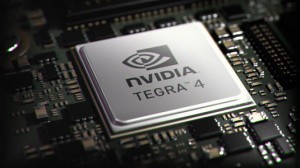


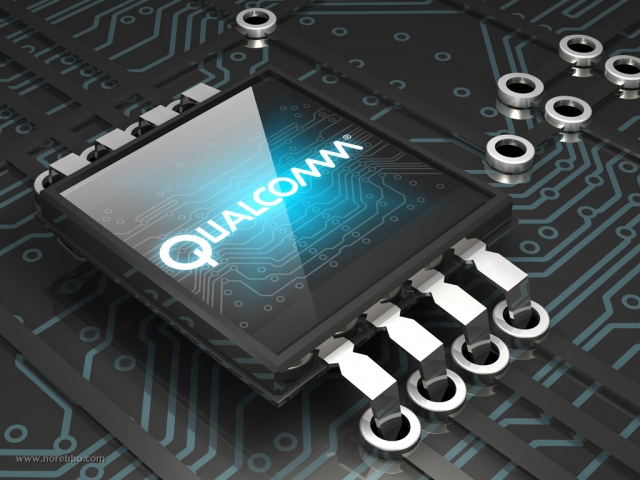





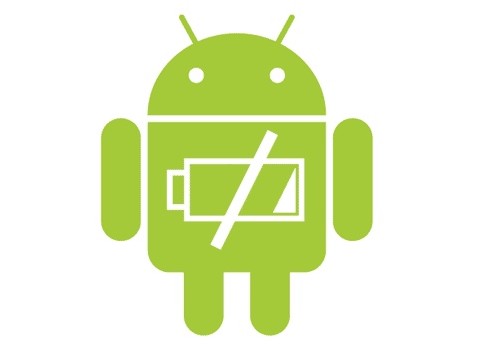

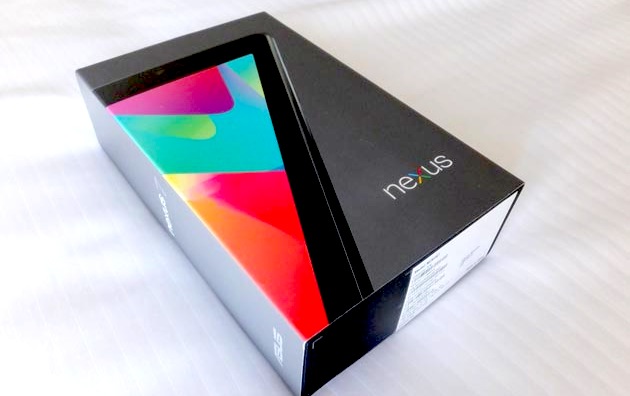
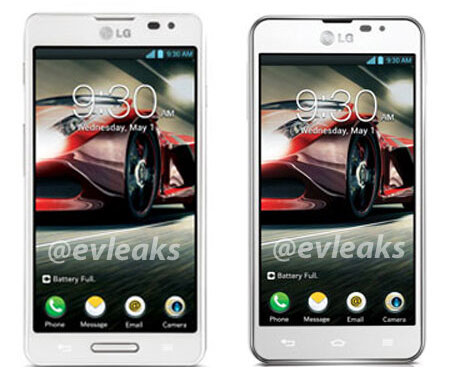
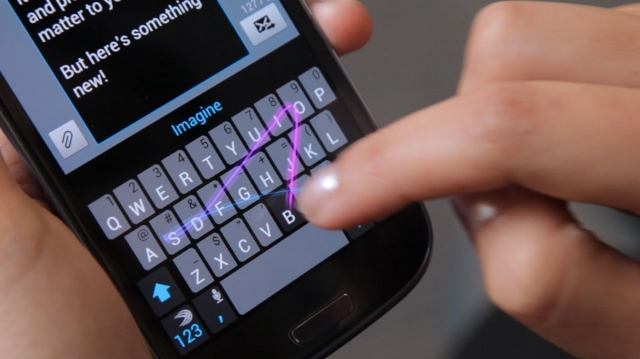

No comments:
Post a Comment